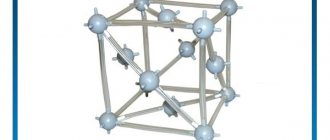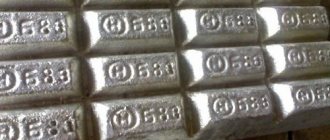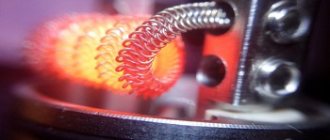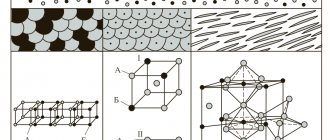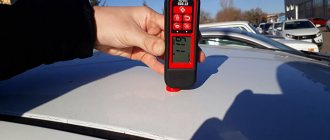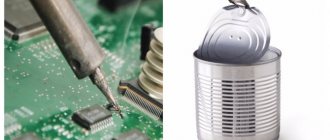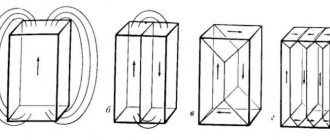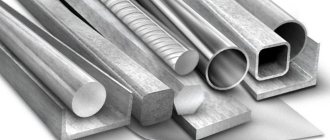Density of metals
Table of density ρ of materials g/cm3 (kg/dm3) and coefficients K = ρ/7.85*
* According to the reference book P.M. Polivanov, E.P. Polivanova. Tables for calculating the mass of parts and materials: Handbook. 13th edition, 2006 (revised in accordance with GOST standards).
| Group name | Name of material, brand | ρ | TO |
| PURE METALS | |||
| Pure metals | Aluminum | 2,7 | 0,34 |
| Beryllium | 1,84 | 0,23 | |
| Vanadium | 6,5-7,1 | 0,83-0,90 | |
| Bismuth | 9,8 | 1,24 | |
| Tungsten | 19,3 | 2,45 | |
| Gallium | 5,91 | 0,75 | |
| Hafnium | 13,09 | 1,66 | |
| Germanium | 5,33 | 0,68 | |
| Gold | 19,32 | 2,45 | |
| Indium | 7,36 | 0,93 | |
| Iridium | 22,4 | 2,84 | |
| Cadmium | 8,64 | 1,10 | |
| Cobalt | 8,9 | 1,13 | |
| Silicon | 2,55 | 0,32 | |
| Lithium | 0,53 | 0,07 | |
| Magnesium | 1,74 | 0,22 | |
| Copper | 8,94 | 1,14 | |
| Molybdenum | 10,3 | 1,31 | |
| Manganese | 7,2-7,4 | 0,91-0,94 | |
| Sodium | 0,97 | 0,12 | |
| Nickel | 8,9 | 1,13 | |
| Tin | 7,3 | 0,93 | |
| Palladium | 12,0 | 1,52 | |
| Platinum | 21,2-21,5 | 2,69-2,73 | |
| Rhenium | 21,0 | 2,67 | |
| Rhodium | 12,48 | 1,58 | |
| Mercury | 13,6 | 1,73 | |
| Rubidium | 1,52 | 0,19 | |
| Ruthenium | 12,45 | 1,58 | |
| Lead | 11,37 | 1,44 | |
| Silver | 10,5 | 1,33 | |
| Waist | 11,85 | 1,50 | |
| Tantalum | 16,6 | 2,11 | |
| Tellurium | 6,25 | 0,79 | |
| Titanium | 4,5 | 0,57 | |
| Chromium | 7,14 | 0,91 | |
| Zinc | 7,13 | 0,91 | |
| Zirconium | 6,53 | 0,82 | |
| ALLOYS FROM NON-FERROUS METALS | |||
| Aluminum casting alloys | AL1 | 2,75 | 0,35 |
| AL2 | 2,65 | 0,34 | |
| AL3 | 2,70 | 0,34 | |
| AL4 | 2,65 | 0,34 | |
| AL5 | 2,68 | 0,34 | |
| AL7 | 2,80 | 0,36 | |
| AL8 | 2,55 | 0,32 | |
| AL9 (AK7ch) | 2,66 | 0,34 | |
| AL11 (AK7TS9) | 2,94 | 0,37 | |
| AL13 (AMg5K) | 2,60 | 0,33 | |
| AL19 (AM5) | 2,78 | 0,35 | |
| AL21 | 2,83 | 0,36 | |
| AL22 (AMg11) | 2,50 | 0,32 | |
| AL24 (AC4Mg) | 2,74 | 0,35 | |
| AL25 | 2,72 | 0,35 | |
| Tin and lead babbits | B88 | 7,35 | 0,93 |
| B83 | 7,38 | 0,94 | |
| B83S | 7,40 | 0,94 | |
| BN | 9,50 | 1,21 | |
| B16 | 9,29 | 1,18 | |
| BS6 | 10,05 | 1,29 | |
| Tin-free bronzes, foundry | BrAmts9-2L | 7,6 | 0,97 |
| BrAZH9-4L | 7,6 | 0,97 | |
| BrAMZH10-4-4L | 7,6 | 0,97 | |
| BrS30 | 9,4 | 1,19 | |
| Tin-free bronzes, pressure-processed | BrA5 | 8,2 | 1,04 |
| BrA7 | 7,8 | 0,99 | |
| BrAmts9-2 | 7,6 | 0,97 | |
| BrAZH9-4 | 7,6 | 0,97 | |
| BrAZhMts10-3-1.5 | 7,5 | 0,95 | |
| BrAZHN10-4-4 | 7,5 | 0,95 | |
| BrB2 | 8,2 | 1,04 | |
| BrBNT1.7 | 8,2 | 1,04 | |
| BrBNT1.9 | 8,2 | 1,04 | |
| BrKMts3-1 | 8,4 | 1,07 | |
| BrKN1-3 | 8,6 | 1,09 | |
| BrMts5 | 8,6 | 1,09 | |
| Bronze tin deformable | BrOF8-0.3 | 8,6 | 1,09 |
| BrOF7-0.2 | 8,6 | 1,09 | |
| BrOF6.5-0.4 | 8,7 | 1,11 | |
| BrOF6.5-0.15 | 8,8 | 1,12 | |
| BrOF4-0.25 | 8,9 | 1,13 | |
| BrOTs4-3 | 8,8 | 1,12 | |
| BrOTsS4-4-2.5 | 8,9 | 1,13 | |
| BrOTsS4-4-4 | 9,1 | 1,16 | |
| Bronze tin castings | BrO3TS7S5N1 | 8,84 | 1,12 |
| BrO3Ts12S5 | 8,69 | 1,10 | |
| BrO5TS5S5 | 8,84 | 1,12 | |
| BrO4Ts4S17 | 9,0 | 1,14 | |
| BrO4TS7S5 | 8,70 | 1,10 | |
| Beryllium bronzes | BrB2 | 8,2 | 1,04 |
| BrBNT1.9 | 8,2 | 1,04 | |
| BrBNT1.7 | 8,2 | 1,04 | |
| Copper-zinc alloys (brass) foundry | LTs16K4 | 8,3 | 1,05 |
| LTs14K3S3 | 8,6 | 1,09 | |
| LTs23A6Zh3Mts2 | 8,5 | 1,08 | |
| LC30A3 | 8,5 | 1,08 | |
| LTs38Mts2S2 | 8,5 | 1,08 | |
| LTs40S | 8,5 | 1,08 | |
| LS40d | 8,5 | 1,08 | |
| LTs37Mts2S2K | 8,5 | 1,08 | |
| LTs40Mts3ZH | 8,5 | 1,08 | |
| Copper-zinc alloys (brass), pressure-processed | L96 | 8,85 | 1,12 |
| L90 | 8,78 | 1,12 | |
| L85 | 8,75 | 1,11 | |
| L80 | 8,66 | 1,10 | |
| L70 | 8,61 | 1,09 | |
| L68 | 8,60 | 1,09 | |
| L63 | 8,44 | 1,07 | |
| L60 | 8,40 | 1,07 | |
| LA77-2 | 8,60 | 1,09 | |
| LAZ60-1-1 | 8,20 | 1,04 | |
| LAN59-3-2 | 8,40 | 1,07 | |
| LZhMts59-1-1 | 8,50 | 1,08 | |
| LN65-5 | 8,60 | 1,09 | |
| LMts58-2 | 8,40 | 1,07 | |
| LMtsA57-3-1 | 8,10 | 1,03 | |
| Pressed and drawn brass rods | L60, L63 | 8,40 | 1,07 |
| LS59-1 | 8,45 | 1,07 | |
| LZhS58-1-1 | 8,45 | 1,07 | |
| LS63-3, LMts58-2 | 8,50 | 1,08 | |
| LZhMts59-1-1 | 8,50 | 1,08 | |
| LAZ60-1-1 | 8,20 | 1,04 | |
| Magnesium alloys foundry | Ml3 | 1,78 | 0,23 |
| ML4 | 1,83 | 0,23 | |
| Ml5 | 1,81 | 0,23 | |
| Ml6 | 1,76 | 0,22 | |
| Ml10 | 1,78 | 0,23 | |
| Ml11 | 1,80 | 0,23 | |
| Ml12 | 1,81 | 0,23 | |
| Magnesium alloys wrought | MA1 | 1,76 | 0,22 |
| MA2 | 1,78 | 0,23 | |
| MA2-1 | 1,79 | 0,23 | |
| MA5 | 1,82 | 0,23 | |
| MA8 | 1,78 | 0,23 | |
| MA14 | 1,80 | 0,23 | |
| Pressure-processed copper-nickel alloys | Kopel MNMts43-0.5 | 8,9 | 1,13 |
| Constantan MNMts40-1.5 | 8,9 | 1,13 | |
| Cupronickel MnZhMts30-1-1 | 8,9 | 1,13 | |
| Alloy MNZh5-1 | 8,7 | 1,11 | |
| Cupronickel MH19 | 8,9 | 1,13 | |
| Alloy TB MN16 | 9,02 | 1,15 | |
| Nickel silver MNTs15-20 | 8,7 | 1,11 | |
| Kunial A MNA13-3 | 8,5 | 1,08 | |
| Kunial B MNA6-1.5 | 8,7 | 1,11 | |
| Manganin MNMts3-12 | 8,4 | 1,07 | |
| Nickel alloys | NK 0.2 | 8,9 | 1,13 |
| NMTs2.5 | 8,9 | 1,13 | |
| NMTs5 | 8,8 | 1,12 | |
| Alumel NMtsAK2-2-1 | 8,5 | 1,08 | |
| Chromel T HX9.5 | 8,7 | 1,11 | |
| Monel NMZHMts28-2.5-1.5 | 8,8 | 1,12 | |
| Anti-friction zinc alloys | TsAM 9-1.5L | 6,2 | 0,79 |
| TsAM 9-1.5 | 6,2 | 0,79 | |
| TsAM 10-5L | 6,3 | 0,80 | |
| TsAM 10-5 | 6,3 | 0,80 | |
| STEEL, SHAVINGS, CAST IRON | |||
| Stainless steel | 04Х18Н10 | 7,90 | 1,00 |
| 08Х13 | 7,70 | 0,98 | |
| 08Х17Т | 7,70 | 0,98 | |
| 08Х20Н14С2 | 7,70 | 0,98 | |
| 08Х18Н10 | 7,90 | 1,00 | |
| 08Х18Н10Т | 7,90 | 1,00 | |
| 08Х18Н12Т | 7,95 | 1,01 | |
| 08Х17Н15М3Т | 8,10 | 1,03 | |
| 08Х22Н6Т | 7,60 | 0,97 | |
| 08Х18Н12Б | 7,90 | 1,00 | |
| 10Х17Н13М2Т | 8,00 | 1,02 | |
| 10Х23Н18 | 7,95 | 1,01 | |
| 12Х13 | 7,70 | 0,98 | |
| 12Х17 | 7,70 | 0,98 | |
| 12Х18Н10Т | 7,90 | 1,01 | |
| 12Х18Н12Т | 7,90 | 1,00 | |
| 12Х18Н9 | 7,90 | 1,00 | |
| 15Х25Т | 7,60 | 0,97 | |
| Structural steel | Structural steel | 7,85 | 1,0 |
| Steel casting | Steel casting | 7,80 | 0,99 |
| High-speed steel with tungsten content, % | 5 | 8,10 | 1,03 |
| 10 | 8,35 | 1,06 | |
| 15 | 8,60 | 1,09 | |
| 18 | 8,90 | 1,13 | |
| Chips (t/m3) | aluminum fine crushed | 0,70 | |
| steel (small loach) | 0,55 | ||
| steel (large loach) | 0,25 | ||
| cast iron | 2,00 | ||
| Cast iron | grey | 7,0-7,2 | 0,89-0,91 |
| malleable and high strength | 7,2-7,4 | 0,91-0,94 | |
| antifriction | 7,4-7,6 | 0,94-0,97 | |
Indicators of the specific gravity of other metals
Specific gravity is an indicator that is an integral characteristic of other metals.
The specific gravity of silver is affected by the fineness of the alloy. When other metals (copper, nickel) are added to it, the specific gravity and density are lost. Thus, the density of copper is 8.93 g/cm3, nickel – 8.91 g/cm3. All values are calculated using formulas.
Silver is the same noble metal as gold. Its specific gravity is 10.5 g/cm3. It melts at a temperature of 960 degrees. The main physical characteristics of silver are:
- corrosion resistance;
- low resistance;
- increased light reflectivity.
Despite its natural softness, silver has a high density and specific gravity.
Titanium is a non-ferrous metal of a white-silver hue. It has high strength, although it is light in weight. So, it is 12 times stronger than aluminum and 4 times stronger than copper and iron. In terms of the degree of presence in the earth's crust, titanium is given fourth place among the rest.
The low specific gravity of titanium - 4.505 g/cm3 is more consistent with alkali metals. An oxide film forms on its surface, which prevents the formation of corrosion.
Zinc is also a non-ferrous metal with a white-bluish tint. It has medium hardness and an initial melting point of 419 degrees. Under the influence of a temperature of 913 degrees, this metal acquires a vaporous state. Zinc has a specific gravity of 7.13 g/cm3.
Normal temperature makes zinc brittle, but increasing it to 100 degrees makes the metal flexible and ductile. When interacting with air, an oxide film forms on the surface of zinc.
The color of lead is dirty gray, but this does not affect the natural shine of the metal. However, the glow stops quite quickly due to the formation of an oxide film on the surface of the lead. The lead alloy has a high specific gravity - 11.337 g/cm3. In this indicator, it exceeds zinc, aluminum, iron and some other metals. Despite its high density, lead is a very soft metal.
The table shows the specific gravity and melting points of other metals.
Read also: Rollers for grinder drawings with dimensions
| Name of metal | Melting point, °C | Specific gravity, g/cc |
| Zinc | 419.5 | 7.13 |
| Aluminum | 659 | 2.69808 |
| Lead | 327.4 | 11.337 |
| Tin | 231.9 | 7.29 |
| Copper | 1083 | 8.96 |
| Titanium | 1668 | 4.505 |
| Nickel | 1455 | 8.91 |
| Magnesium | 650 | 1.74 |
| Vanadium | 1900 | 6.11 |
| Tungsten | 3422 | 19.3 |
| Chromium | 1765 | 7.19 |
| Molybdenum | 2622 | 10.22 |
| Silver | 1000 | 10.5 |
| Tantalum | 3269 | 16.65 |
| Iron | 1535 | 7.85 |
| Gold | 1095 | 19.32 |
| Platinum | 1760 | 21.45 |
Officially accepted samples
An alloy, by definition, is the combination of pure silver with other metals for the purpose of improving some specific characteristics. There is a decree of the government of the Russian Federation, which clearly establishes silver samples, their chemical composition and characteristic properties and characteristics.
The lowest of them is 720 standard: the digital designation indicates that this alloy contains 72% pure silver, and the rest (28%) are impurities of other materials. This metal finds its use exclusively in industry and production.
The 800 standard of a silver alloy indicates that it contains at least 80% pure metal. Although it is generally considered to be of lower quality, it has good casting characteristics. It is this property that makes it possible to make sets of cutlery from this precious metal, which often become family heirlooms and are passed on from generation to generation. For the same purposes, a precious metal is used, which has 83% chemically pure silver in composition, differing from the previous one only in the smaller amount of impurities in the alloy.
But the metallic compound of silver, which has a standard 875, can already be used not only for production and industrial needs, but also in jewelry. The percentage of pure metal in it is 87.5. All of the above alloys have a pronounced yellowish color. The lower the sample, the yellower the metal. The combination of silver with metal additives of 925 standard has a white-silver (“noble”) color. This composition performs well when melted; it is very malleable and ductile. These characteristics allow jewelers to create true works of art.
960 silver alloy is very similar in its mechanical and technical characteristics to chemically pure silver. Used by jewelers to create the finest precious items, distinguished by grace and airiness: enamel and filigree, various types of engraving, combination with enamel.
It is this ease of processing that allows craftsmen to create the most magnificent and daring jewelry creations. And beautiful ladies and fashionistas can become their owners at a fairly affordable price (compared to gold and platinum items).
How to determine a metal sample by density?
This method was invented in Ancient Greece by Archimedes. Its meaning is to weigh in water. This method also refers to non-destructive testing methods. The point is to find density; to do this, you need to weigh your product and determine its volume. Everything is clear with the first value, but how to determine the volume?
To do this, you need to measure the volume of displaced water when placing jewelry in it. Then the mass must be divided by the volume. Thus, we obtain the density value. Next, using the formula described above, we derive an expression for calculating the sample value of a specific alloy: D = 6.481-57.56/r.
Determination of product mass
All modern reference materials, GOST and technical specifications of enterprises have been adjusted in accordance with the international classification.
Using reference tables of densities of various materials, it is easy to determine their mass. This is especially true when items are heavy or appropriate scales are not available . To do this, you need to know their geometric parameters. Most often, you need to find out the mass of an object in the form of a cylinder, pipe or parallelepiped:
Metal rods are cylindrical in shape. Knowing the diameter and length, it is easy to find out the mass. Mass equals density times volume. Finding the volume of an object. It is obtained by multiplying the cross-sectional area by the length. The area of a circle, knowing the diameter, is easy to determine. The squared diameter is multiplied by 3.14 (pi), divided by 4.- We obtain the mass of the pipe in the same way. When finding the area, we take the difference between the outer and inner diameter of the section.
- To determine the mass of a sheet, bloom, slab or bar of rectangular cross-section, we determine the volume by multiplying the length, height and thickness. Multiply by the density from the reference book.
With such calculations, a small error is always allowed, because the shapes are not ideal. In practice it can be neglected. Manufacturers of metal products have developed special mass calculators for users. It is enough to enter unique dimensions in the appropriate windows and get the result.
Transportation of metal products
In the cargo transportation system, such a concept as “volumetric weight” is involved. If the mass of an object in one cubic meter is 167 kg, then this weight is considered physical, and if it is less, it is considered volumetric. For example, the mass of a cube of carbon steel is 7750 kg. In other words, the volumetric weight of steel is 7750 kg. These calculations are needed to determine how much volume the transported cargo will occupy.
However, depending on what metal products are transported, the volume will vary. Let's assume that there are several different hardware of the same grade of steel. In theory, they have the same density. However, ingots, large-grade products and coils of wire have different volumes, and therefore, when transported, they will take up more or less space in transport. Thus, they have different volumetric weights. Under any conditions, a cubic meter of steel is more than 167 kg, therefore, it cannot be called volumetric.
- Author: admin
Rate this article:
- 5
- 4
- 3
- 2
- 1
(1 vote, average: 5 out of 5)
Share with your friends!
